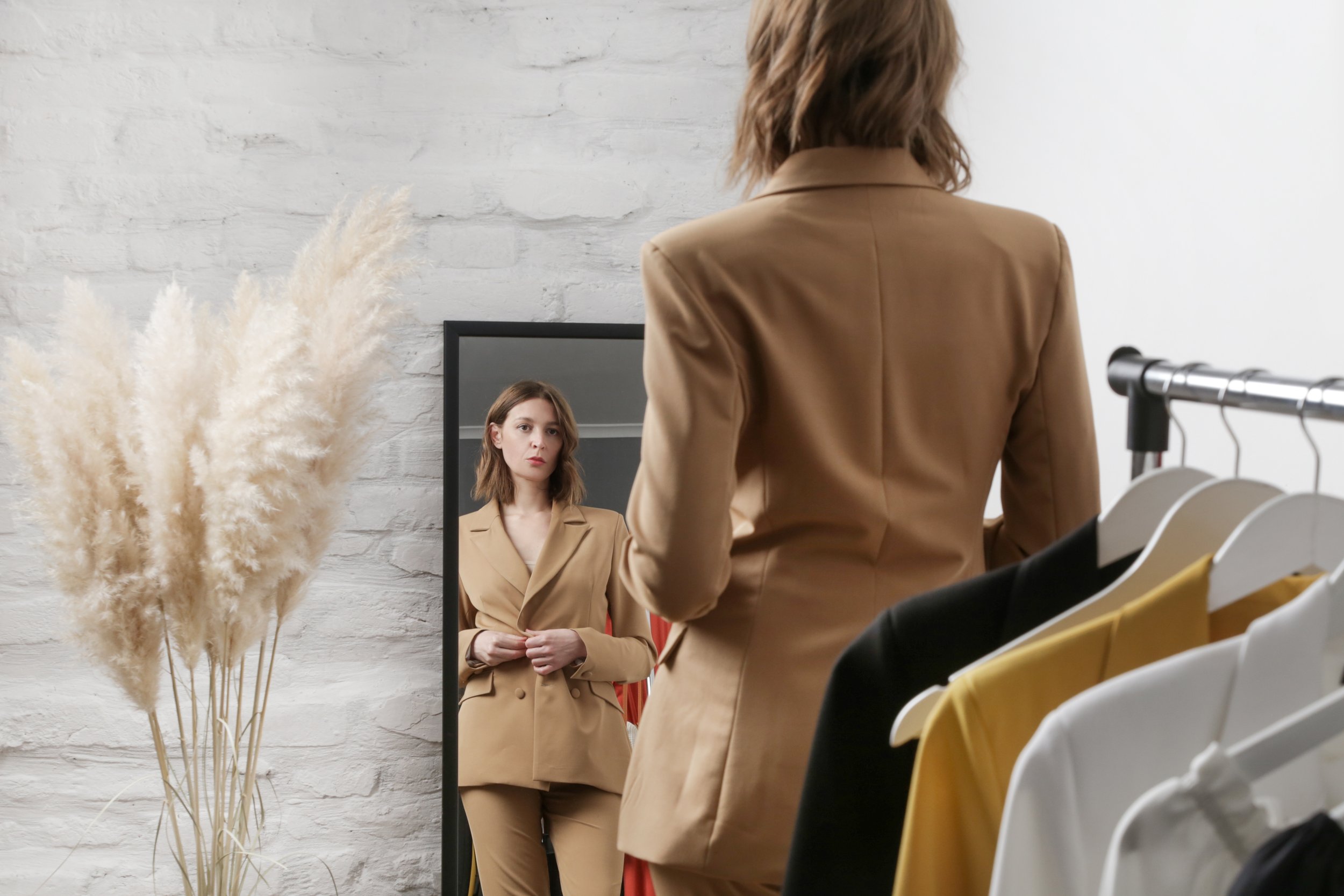Should You be Using Yourself as a Fit Model?
We are entering a very grey area. But I’m not going to tell you not to use yourself as a fit model. It’s just not realistic. Heck, I even do it myself and I’ll go into detail on how. However, going this route does have it’s implications.
Professional Fit Models
Fit models are chosen not for their looks, but for their body shape. They have a certain “balance” to their body. Balance is hard to describe and often subjective, but it does exist. It is the equivalent of good proportions. It’s basically what umami is for cooking. For instance, I’ve come to recognize after working with top notch professional fit models and making patterns to fit them, that if someone else tries on a garment made from my pattern formula and it doesn’t work, I know they are not balanced. But very few people are.
Models have these balanced proportions because they represent an average. The best fit aims to fit a good amount of people “well”. A professional fit model is chosen based on being the mid-range of the customer. In the bigger picture, we also have to consider how this fit sample size is graded up and down. When you grade, distortions occur at the highest and lowest sizes. If the fit model has balance issues, it’s going to show up two-fold in the sizing.
Telling you who does or does not have a balanced body is hard for me to say just by looking at them. They would have to try on one of my patterns. If it looks strange on a model, then I know something is up. I don’t operate on absolutes, but this does give me an idea of what we are starting from and it something is fitting really strangely, that person may not be the best to use.
You as your fit model
I think the goal for most designers is to have a product that they have envisioned in their head, fitting them to their own specifications. Depending on the product intent, this could be acceptable, but most times it is not. None of us are professional models so out bodies have a variance that does not always represent the average.
Yes, I say us. I use myself as a fit model for my own product line. However, I keep a tight control over things. I initially developed my sizing chart using my measurements as standard size small. Back in the day, I had a pretty decent proportion from chest waist and hip that was fairly standard for most brands. However, as I’ve gotten older measurements have changed and must now be addressed.
I measure myself every few months to ensure I fall within an acceptable allowance for my size standards. I’ve currently gained 1” in my hips which has put me over to the next size. I’m not going to fit garments on myself and call it a small as is. I will either lose the weight or I will take this into account and allow the fit of the hips to be tighter just on me. You should be doing the same.
Recognizing your differences
Just as it is important to keep track of measurements, it’s also important to be realistic of your own body. No one is exactly alike, but you must try to put your fit into a category that represents a good chunk of the people that will buy from you.
Many of my customers are in the 50-60 age range category. They have postural issues and are losing bone density. I’m nearly 40 and I work out a lot so I am more muscular than most. It is unrealistic for me to assume that a blouse should fit me perfectly in the shoulders and bicep and fit my customers the same way. I’ve come to expect more tightness in these areas when I am assessing the fit. If it fits me too well it’s no good.
Using your friends as fit models
Everything we discussed above about using yourself, applies to your friends as well. Just because they have the right measurements does not mean they are the perfect fit. Body shapes and proportions are different.
Fit is fluid
We are always working towards an average fit for our customer base. To get to this point it’s really important to have an eye for fit- what is acceptable and what is not. Fit is not about creating a garment that has no wrinkles on the body and is perfectly smooth in all spots. This is just unrealistic. This is also especially perilous if this occurs on a model that may not have the correct body for your brand.
Back in the day I worked with a retailer who used a fit model that looked like she had breast implants, or at least we suspected. Some technical designers just don’t have an eye for “average” and will over fit a garment based on a specific body. This happened to some expensive leather jackets that we were working on. We knew that the models breasts meant trouble, so we tried to average it out, but the fit would just not be approved to the technical designers liking until it was really fitted above and below her bust. We did it. We produced it. The reviews came in…and so did the returns.
It was comical so see those in my office trying on this jacket to review. We all did it and it was like you had to pat the chest down because it stuck out in a hollow way, and then you looked like you had deflated breasts. Not a good look.
We can absolutely fit a garment perfectly to any model, but it’s always important to think about how this represents the whole.

